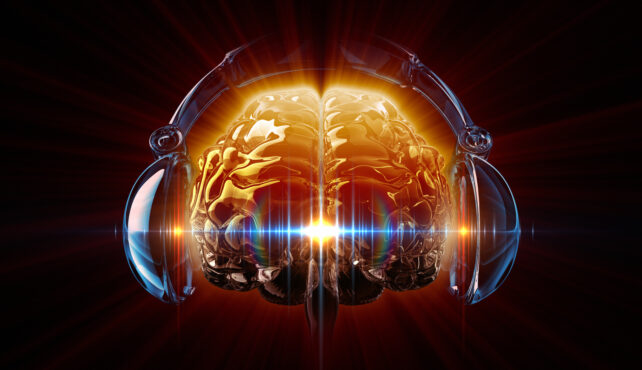Ever felt like a song really resonates with you? That may be more true than you think.
A new theory suggests that we don't just listen to it; our bodies physically resonate with music, as our brains' natural oscillations synchronize with structures like rhythm and pitch.
Music is often thought of as a 'universal language' – people across cultures will bust out similar moves, and young kids will instinctively bop to a beat.
According to neural resonance theory, it's not just that we learn to expect and predict what's coming; aspects like harmony in the music we make and enjoy sound so good to us because they're in sync with the brain's resonant patterns.
"This theory suggests that music is powerful not just because we hear it, but because our brains and bodies become it," says Caroline Palmer, neuroscientist at McGill University in Canada. "That has big implications for therapy, education, and technology."
It's not a coincidence, of course. As humans messed around with music over millennia, we figured out what sounds best without necessarily understanding why.
Neural resonance theory (NRT) has now been formally described by Palmer and co-authors in a perspective paper reviewing the literature on musical neuroscience.

One of the key suggestions of NRT is that neural oscillations synchronize with external audio at different rates. On the slower end of the timescale is what we call rhythm, with distinct beats you can dance or bang a drum to. Neurons in the cortex oscillate at frequencies that resonate with those pulses in the music.
Higher frequencies, from about 30 to over 4,000 Hertz, are perceived as pitch. Gamma-frequency oscillations in the cortex sync up with the lower end of that, while the auditory nerve, brain stem, and cochlea resonate at the higher pitches.
This all comes together to make music pleasurable regardless of musical background – from young children to classically trained pros.
"Statistically universal structures may have arisen in music because they correspond to stable states of complex, pattern-forming dynamical systems," the authors explain.
That's not to say that there's no learned factor to appreciating music; the team says that aspects like pulse and more complex structures like meter can vary widely based on culture.
Simple pulses, like one you might clap to or bounce a baby on your knee to, develop more quickly and become stronger over time, but more complex structures are culture-specific. Over time, the brain oscillations showed bias towards those learned structures, called attunement.
Other aspects covered by NRT include groove, which is basically the urge to move your body to music. When a beat doesn't follow a predictable pulse but falls between pulses to a degree, the brain has to fill in the blanks – which the team calls nonlinear resonance.
"High groove ratings" required just the right amount of this nonlinear resonance. Of course, music that's too disjointed isn't groovy enough to dance to either. Understandably, pop music tends to fall right in the middle of that range.
The paper also explores how NRT explains various other aspects of music, and what we can learn by applying it to this universal joy.
"NRT can provide insights into both neuroscience and human behavior, as well as the link between the two," the researchers write.
"Such insights can shed light on the interconnectedness of brain and body, the ability of music to communicate affect and emotion, the role of music in interpersonal bonding, and applications of music to brain health."
The perspective was published in the journal Nature Reviews Neuroscience.
